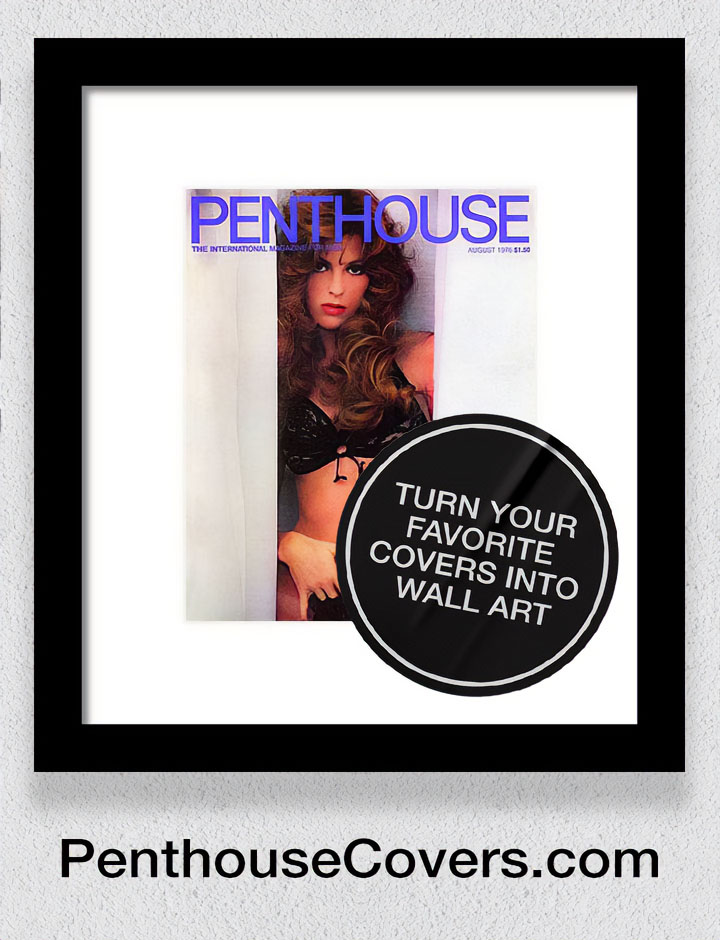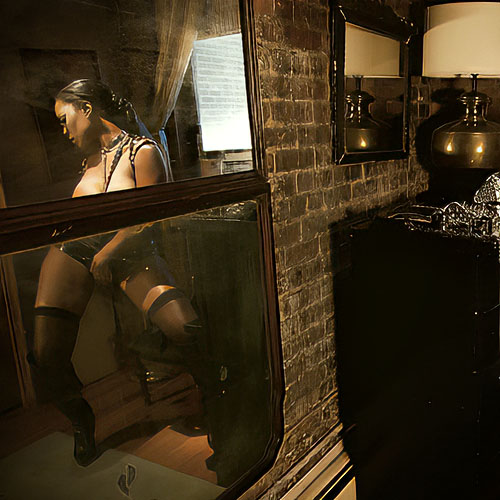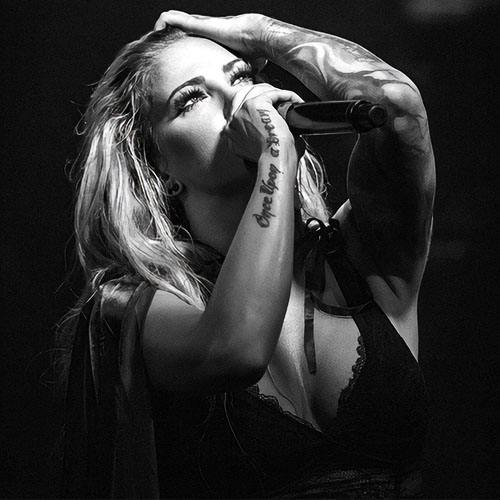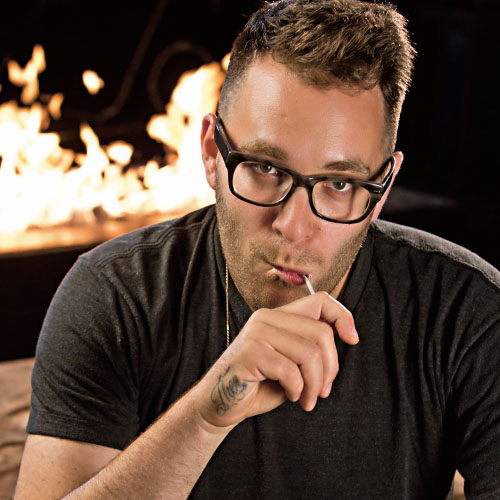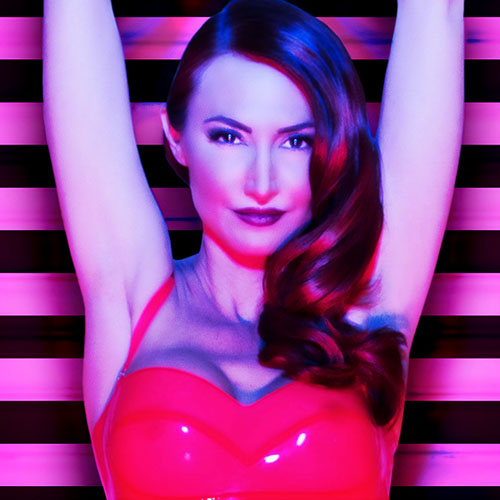Arthur J. Williams Jr. has the distinction of being the first person to successfully replicate the 1996 $100 bill, which the U.S. Treasury designed to be counterfeit-proof.
Integrating old-school printing-press methods with digital technology, the Chicago-born Williams did the impossible. As the Secret Service tried to trace the source, Williams reportedly created as much as $10 million in funny money, his visual skills allowing to him to craft a product stunningly realistic on every level, from the watermark and security thread to the ink and imagery. His exploits were captured in a best-selling 2009 book, The Art of Making Money. Eventually apprehended, the former petty thief turned gangster turned master counterfeiter was put behind bars for a third time. When Williams emerged, he had transformed himself yet again, walking to freedom as an exceptionally gifted painter.
How did you first get involved painting and creating art?
It started when I was in prison. I’d always had a fascination with old currency. I used to collect bills from the 1800s. I marveled at the beauty the old engravers could produce. I always felt like America was a strong, powerful force and the money back then actually showed that. I started drawing with a pencil. I was creating pencil images throughout my transfers from FCI Manchester to FCI Big Springs. I didn’t really start painting until I got to FCI Forrest City in Arkansas. I started with oils. A fellow inmate taught a class. I read art books. You don’t have an iPhone to Google images or watch instructional videos. Using books, I learned by studying the masters, like da Vinci and Michelangelo. I read up on colors and techniques. By the time I got out, I could paint anything my eye could see.
After serving seven years, you hit the streets in 2014. How was your transition?
Before going in, I was a pretty powerful dude in Chicago. I knew all the heads of the mobs. If I needed money, I just printed it. I could have gone to the basement, printed $100 million, and been done with it. Maybe I should have done that. But instead, I just printed what I needed. When I got out of prison it was real humbling. I only had a little bit of money. My wife had left me. She was down in Texas with the three kids. I felt really alone. I didn’t know what I was going to do. A really good friend of mine that I’d let down, Mark Schwartz, got me a job cleaning for $15 an hour.
I went from being a real powerhouse in Chicago to scrubbing toilet bowls.
How would you compare printing money to painting images of it?
Mixing paints is kind of like mixing inks. I feel like I’m still printing money. I’m printing it on canvas now. I get to have that same feeling. I got pieces that have watermarks in them, the same as money. I got the Capone piece. It has a strip like the bills. I also put little quotes within the strips. I got paintings that glow underneath, ultraviolet like money. I got almost every security feature that’s in the bills. Watermark. Strip. The interference. Changing colors. Ultraviolet. All these things, even micro stuff. I got micro-handpainted stuff I did that’s insane. I basically applied all the security features that were on actual money into my art. I got secret symbols in my art. Stuff that you don’t even know is there.
What was it like growing up in a tough part of Chicago?
I grew up in Bridgeport, on the South Side. I was stealing change from parking meters to put food on the table as a kid. Life wasn’t easy. My mom — the bipolar kicked in real bad. We ended up in the projects. Gangs, drugs, violence, the whole thing. Not too many people made it out of there. I had some friends get killed. I’d been shot. That’s when I ended up meeting the old man who took me under his wing and showed me how to print money. I was there until I was about 21. The last time I got shot I was like, I’m done. I went down to Texas. Nine years later, I came back to the same neighborhood.
Your career has taken off since showing your paintings at last year’s Art Basel Miami. What’s it feel like to have your hard work rewarded?
Three years ago, I was at a point where I felt ready to give up. Nothing was working. The jobs I had been doing were paying cheap. I got real close to feeling like, man, this shit just ain’t working. I didn’t look at the painting as something that I’d make money off of. I thought I would be painting houses the rest of my life. I kind of gave up on the dream of being an artist. I still painted but I didn’t look at it as, okay, this is what my life’s going to be. Then my house burned down and I lost everything. The only thing that survived the fire was my paintings. [Real-estate developers] Joey Jr. and his dad Joseph Cacciatore Sr. gave me a studio at Lacuna artist lofts. They’ve supported me since day one.
Art Basel Miami was last December. I didn’t know anybody down there. I didn’t really expect much. I was like, Let’s just go down there and let’s just make contact. Let’s see what it’s about. I packed up the truck and drove down to Miami. When I got there, there were freaking Ferraris, Lamborghinis, everything, pulling up. I ended up selling everything to one guy. An awesome dude. He invited me to his yacht. We showed the art there.
You recently opened your own gallery.
I wanted to open this gallery on Morgan. I didn’t have the money to do it, but I believed I was going to get it somehow. On the day they put the for-rent sign up, I had coffee in Bridgeport with my managers. I told them, “Guys, if we’re going to do this we got to go all-in. I got an apartment nearby. I can walk to the gallery.” They wanted to look at it. We went and looked at the place and what do you know? They wrote a check to the landlord right then and there. The space looked jacked-up. They were like, “Art, are you sure you want to use this for your gallery?” And I said, “Hell yeah, guys. I got the vision.”
Everybody was telling me I was crazy for getting this spot. For the next two months, we jammed on the gallery. I was getting help from local plumbers, electricians. It was really cool how the neighborhood came together to help me with this thing. I went back down to Miami and sold some more stuff to help pay for the continued work on the gallery. One of my collectors down in St. Louis came through and bought two pieces just when we were running out of money and I was getting nervous. Art always saves Art. Every time.
People are comparing your work to Andy Warhol’s.
Warhol gave me a blueprint for bringing the printing that I loved and the painting I now love and making them one. I studied what he did and how he did it. I think the difference between me and Warhol is, I realized art could be more than having people work for you. It has the ability to bring people together from all walks of life, like it did at my last show. I had blacks, Latinos, whites, Italians. Just everyone together having a great time. It showed me that I can reinvent myself through art.
Something that trips me out is that I know a lot of artists and they don’t want to be social. They don’t want to be in the crowd. That’s cool. I get it. There’s a level of privacy to art, but I think to be human is to be social and to love people. As you love people, you’ll create better art. That’s what’s happening to me. I’m seeing my artwork improve. I’m becoming more creative.
Recently you’ve been combining images of money and pop-culture icons, right?
These new pieces, the Bond girls, or even the Floyd Mayweather piece — that was the first one I did where I printed with the gold — are exciting to me. I change the bills to where they’re not the same. I get it to where it looks really close, then I change them. When I’m painting I mix colors. I find the texture of what I want to paint on. Different canvases. Maybe different papers, even glass, metal. I’ve painted on everything. Clay. It’s an experiment. I play with a lot of different things. I like to use different shading to do illusions within the image. With the collection I got now, the Icon Collection, the painting that got me going down in Miami was the Marilyn Monroe. But all the icons I did — Marilyn, Prince, Dorothy, Judy Garland — all these people died of an overdose. The reason I did them was because my aunt and uncle both died of overdoses. My sister’s hooked on pain medicine. It’s real to me.
You did a charity event with Arnold Schwarzenegger in Los Angeles. He bought a painting. What was it like hanging out with the Terminator?
I had the Arnold event, I had my gallery opening, and I was invited to go to Cleveland to speak to the Browns. I met defensive coordinator Gregg Williams and he was intrigued by my story. It was all back-to-back. It was overwhelming to me, the trifecta. In L.A., I met Arnold, Jason Statham, others. Arnold was awesome. Dude was like one of us. He was a real dude. He was digging the story. Loved the art. He spent time with me. I didn’t know what to expect from these Hollywood stars, but they were all freaking awesome. At the end of the night they auctioned off some of my work and we raised $150,000 for kids. Blew my mind. People always congratulate me, but I tell them this is just the beginning.










